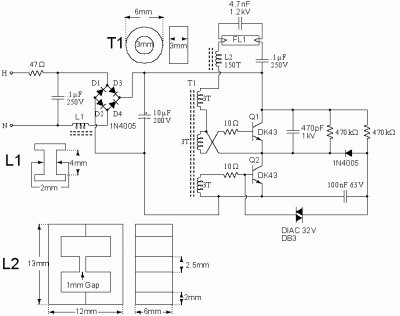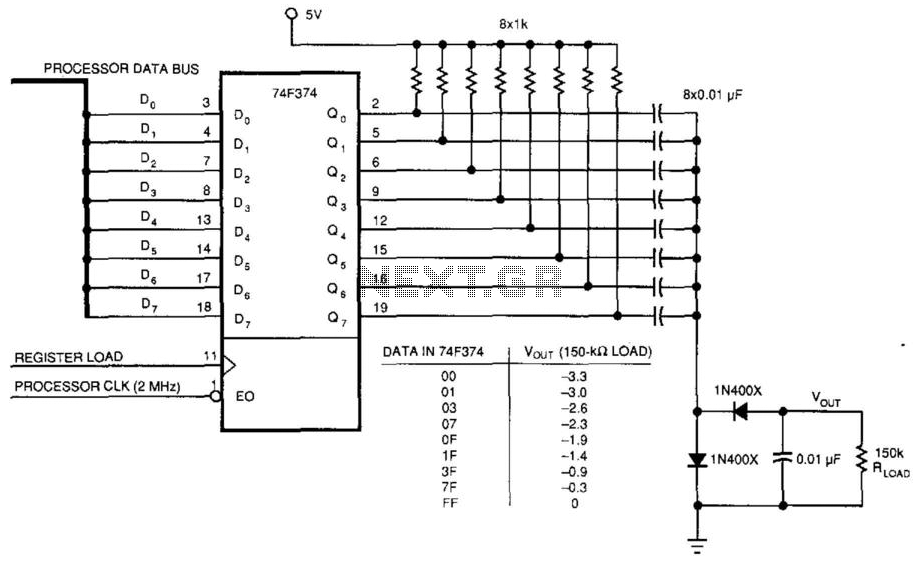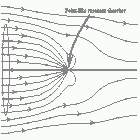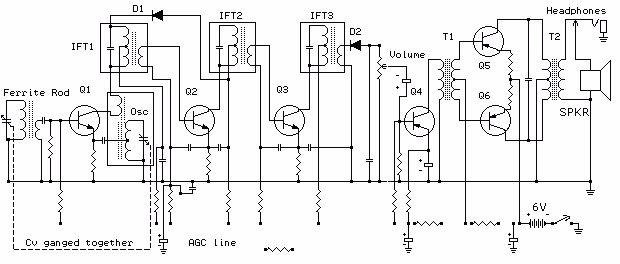
Radio Controlled Electronic Flash
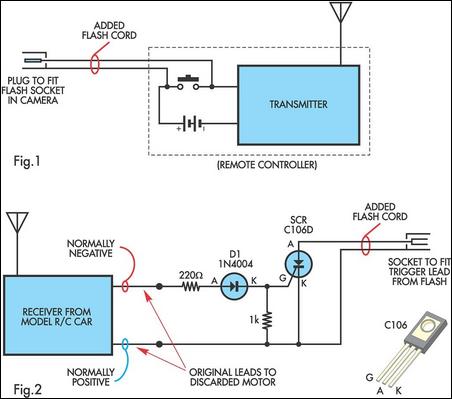
A radio-controlled electronic flash is a valuable tool in any photographer's kit, frequently utilized by professionals. For instance, a wedding photographer may position one behind the bride to illuminate her gown and veil, avoiding visible wires in the shot. To construct this control, an old, simple R/C car is required, which typically operates in reverse upon switch-on and moves forward only when the remote is activated. These cars can often be acquired inexpensively at school fairs and garage sales. A standard car operates on 3V (two cells) with a 9V transmitter. It is essential to verify that the car's electronics are functioning, regardless of whether the wheels or motor are intact. Access to the motor leads is necessary; usually, one lead is positive relative to the other when the remote is inactive. These leads should be labeled accordingly. When the remote button is pressed, the polarity of the motor leads will reverse. Additionally, a flash extension cord will be needed, which can be cut into two sections. At the transmitter, the camera end of the extension cord is inserted into the case and soldered to the control button contacts. These contacts are in series with the battery supply; alternatively, one of the battery leads can be cut to connect the flash extension cord in the gap created. The remote button must be taped down to maintain a closed position. At the receiver end, the normally negative motor lead connects to the gate circuit of a silicon-controlled rectifier (SCR), while the normally positive lead connects to the cathode of the SCR. When the transmitter is activated by the camera's contacts, the lead polarity reverses, allowing the SCR to function as a switch to trigger a portable electronic flash through the other half of the flash extension cord. The transmitter can be attached to the camera using a flash bracket or by screwing it into the tripod socket, depending on convenience. Additional components in the receiver can be mounted on Veroboard and placed in the space where the electric motor was located. For aesthetic purposes, the receiver and components may also be housed in a standard jiffy box. When connecting the flash end of the extension cord to the SCR, ensure that the positive wire connects to the anode of the SCR, as flash cords do not always have the center wire linked to the center pin of the plug. The center pin of the flash unit lead will be positive and must connect to the SCR's anode via the lead connected to the R/C receiver.
To construct the radio-controlled electronic flash system, the following components are required: an old R/C car, a flash extension cord, a silicon-controlled rectifier (SCR), and necessary wiring tools. The R/C car should be disassembled to access the motor leads. The leads must be identified and marked for polarity, ensuring correct connections during assembly. The flash extension cord is cut and prepared for integration with the transmitter and receiver circuitry.
The transmitter circuit involves connecting the flash extension cord to the control button contacts. This can be done by soldering directly to the contacts or by cutting one of the battery leads and inserting the extension cord into the gap. It is crucial to permanently activate the remote button to maintain functionality.
In the receiver circuit, the SCR is the primary component that allows the flash to be triggered. The normally negative lead from the motor connects to the gate of the SCR, while the normally positive lead connects to the cathode. Upon activation of the transmitter, the SCR switches on, allowing current to flow and triggering the flash.
For mounting, Veroboard can be utilized to secure the SCR and any additional components needed for the receiver circuit. This setup can be housed in the original motor compartment of the R/C car or in a jiffy box for a neater appearance. Care must be taken to ensure that the positive wire from the flash extension cord connects to the SCR's anode, as incorrect connections can lead to malfunction.
Overall, this project combines basic electronics and creativity, allowing photographers to enhance their shooting capabilities with a wireless flash system. Proper attention to detail during assembly and testing will ensure reliable operation in various photographic scenarios.A radio controlled electronic flash is a useful item in any photographer`s kit. Professionals use them all the time. For example, a wedding photographer would put one behind the bride to back-light her gown and veil. You don`t want wires showing in a shot like that. To build this control you will need an old R/C car (the simplest sort) in which th e car runs in reverse at switch-on and goes ahead only when the remote is operated. They can be picked up cheaply as school fetes and garage sales. A typical car will run from 3V (two cells) and use 9V in the transmitter. Before proceeding, make sure that the electronics in the car are operating. It doesn`t matter if the wheels are broken or the motor is dead. You need to gain access to the leads to the motor. Normally (ie, without the remote operating), one is positive with respect to the other. Label them accordingly. On pressing the remote button, the polarity of the motor leads should swap. You will also need a flash extension cord you can cut into two sections. At the transmitter, the camera end of the extension cord is fed into the case and soldered to the control button contacts, as shown in Fig. 1. The contacts are in series with the battery supply, so if you don`t want to open the transmitter, just cut one of the battery leads and connect the flash extension cord into the gap so created.
You will then need to tape down the remote button so that it is permanently operated (ie, closed). All that needs to be done at the receiver end is to connect the normally negative motor lead to the gate circuit of an SCR, as shown in Fig. 2, while the normally positive lead goes to the cathode of the SCR. Now, when the transmitter is operated by the camera`s contacts, the lead polarity is reversed and the SCR acts as a switch to fire a portable electronic flash via the other half of the flash extension cord.
The transmitter can be attached to the camera via a flash bracket or a screw into the tripod socket, depending on what is the most convenient arrangement. The added components in the receiver can be mounted on Veroboard and housed in the space where the electric motor was.
If appearance is a primary consideration, the receiver and the added components could be mounted in a standard jiffy box. When connecting the flash end half of the extension cord to the SCR, make sure that it is the positive wire which goes to the anode of the SCR.
Flash cords do not always have the centre wire connected to the centre pin of the plug. The centre pin of the lead on the flash unit will be positive and this must connect to the anode of the SCR via the lead connected to the R/C receiver. 🔗 External reference
To construct the radio-controlled electronic flash system, the following components are required: an old R/C car, a flash extension cord, a silicon-controlled rectifier (SCR), and necessary wiring tools. The R/C car should be disassembled to access the motor leads. The leads must be identified and marked for polarity, ensuring correct connections during assembly. The flash extension cord is cut and prepared for integration with the transmitter and receiver circuitry.
The transmitter circuit involves connecting the flash extension cord to the control button contacts. This can be done by soldering directly to the contacts or by cutting one of the battery leads and inserting the extension cord into the gap. It is crucial to permanently activate the remote button to maintain functionality.
In the receiver circuit, the SCR is the primary component that allows the flash to be triggered. The normally negative lead from the motor connects to the gate of the SCR, while the normally positive lead connects to the cathode. Upon activation of the transmitter, the SCR switches on, allowing current to flow and triggering the flash.
For mounting, Veroboard can be utilized to secure the SCR and any additional components needed for the receiver circuit. This setup can be housed in the original motor compartment of the R/C car or in a jiffy box for a neater appearance. Care must be taken to ensure that the positive wire from the flash extension cord connects to the SCR's anode, as incorrect connections can lead to malfunction.
Overall, this project combines basic electronics and creativity, allowing photographers to enhance their shooting capabilities with a wireless flash system. Proper attention to detail during assembly and testing will ensure reliable operation in various photographic scenarios.A radio controlled electronic flash is a useful item in any photographer`s kit. Professionals use them all the time. For example, a wedding photographer would put one behind the bride to back-light her gown and veil. You don`t want wires showing in a shot like that. To build this control you will need an old R/C car (the simplest sort) in which th e car runs in reverse at switch-on and goes ahead only when the remote is operated. They can be picked up cheaply as school fetes and garage sales. A typical car will run from 3V (two cells) and use 9V in the transmitter. Before proceeding, make sure that the electronics in the car are operating. It doesn`t matter if the wheels are broken or the motor is dead. You need to gain access to the leads to the motor. Normally (ie, without the remote operating), one is positive with respect to the other. Label them accordingly. On pressing the remote button, the polarity of the motor leads should swap. You will also need a flash extension cord you can cut into two sections. At the transmitter, the camera end of the extension cord is fed into the case and soldered to the control button contacts, as shown in Fig. 1. The contacts are in series with the battery supply, so if you don`t want to open the transmitter, just cut one of the battery leads and connect the flash extension cord into the gap so created.
You will then need to tape down the remote button so that it is permanently operated (ie, closed). All that needs to be done at the receiver end is to connect the normally negative motor lead to the gate circuit of an SCR, as shown in Fig. 2, while the normally positive lead goes to the cathode of the SCR. Now, when the transmitter is operated by the camera`s contacts, the lead polarity is reversed and the SCR acts as a switch to fire a portable electronic flash via the other half of the flash extension cord.
The transmitter can be attached to the camera via a flash bracket or a screw into the tripod socket, depending on what is the most convenient arrangement. The added components in the receiver can be mounted on Veroboard and housed in the space where the electric motor was.
If appearance is a primary consideration, the receiver and the added components could be mounted in a standard jiffy box. When connecting the flash end half of the extension cord to the SCR, make sure that it is the positive wire which goes to the anode of the SCR.
Flash cords do not always have the centre wire connected to the centre pin of the plug. The centre pin of the lead on the flash unit will be positive and this must connect to the anode of the SCR via the lead connected to the R/C receiver. 🔗 External reference
